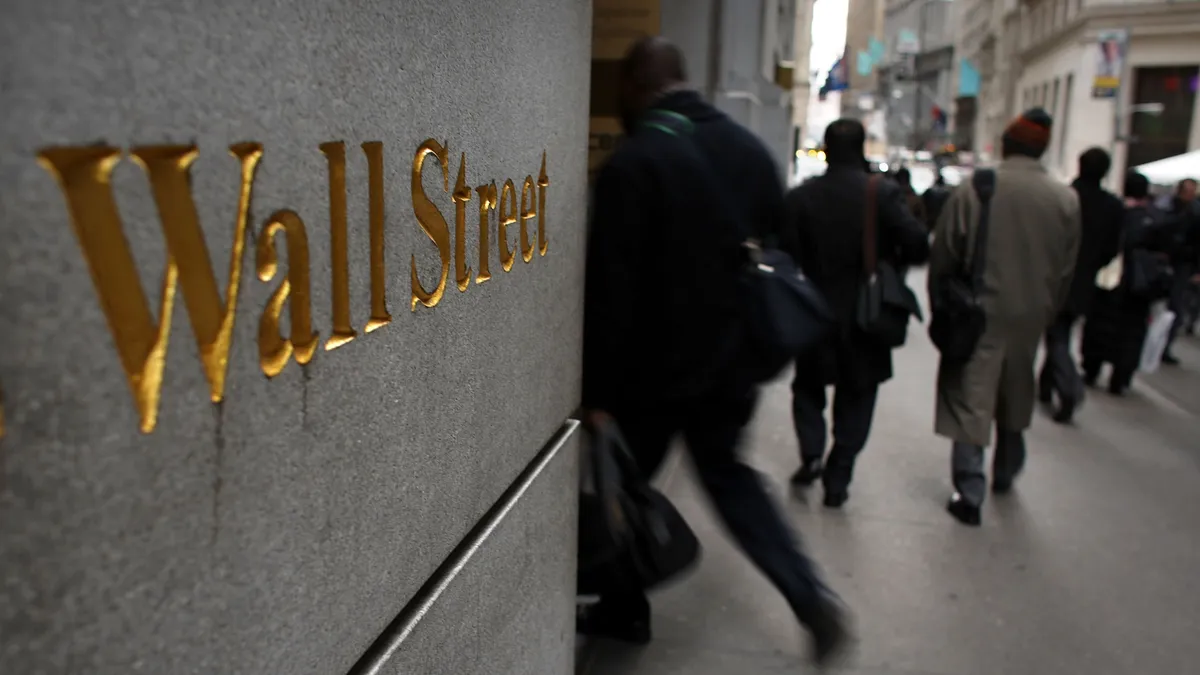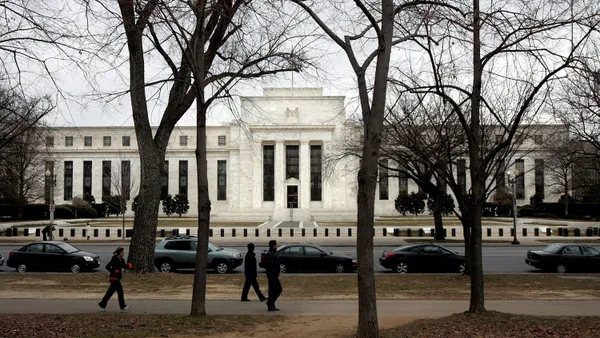Dive Brief:
- Most large global banks are unprepared for the growing risks of climate change, based on a review of public disclosures and annual reports by analytics provider Climate X, published last week.
- The report surveyed 50 of the world’s largest commercial banks (excluding China) and examined their climate adaptation maturity based on 17 qualitative indicators, including alignment with international adaptation goals, physical risk data collection and client engagement. Of the banks surveyed, 86% achieved less than half of those indicators.
- Geographically, U.S. banks had the lowest adaptation maturity when compared to other regions and countries assessed. Citi, JPMorgan Chase, Wells Fargo and Morgan Stanley met four, three, two and one indicators, respectively, while three U.S. banks met no indicators.
Dive Insight:
Alignment with the 17 indicators was evaluated by a large language model adapted from a research paper that looked at how artificial intelligence could be combined with domain expertise to evaluate corporate climate transition disclosures.
The indicators used in the report fell under three categories:
- “think,” or strategic alignment and assessment of physical climate risks;
- “do,” which are adaptation measures and strategies; and
- “track,” referring to monitoring, reporting and transparency of adaptation actions.
The more indicators a bank met, the greater was its climate adaptation maturity, according to the report.
Most banks were found to have met indicators on analyzing physical risk exposures and collecting data, but none set adaptation impact metrics and targets, the survey found.
“The distribution of positive responses across indicators reveals a strong emphasis on managing physical risks by banks and much less on delivering adaptation and resilience products and integrating adaptation into business-as-usual,” report authors wrote.
Indicators that were met by few banks included alignment with national and international adaptation goals and “physical risk targets in use,” pointing to a hesitation to consider broader adaptation goals or align strategies with them. The report’s authors said this could suggest target setting is at an early stage as policymakers and regulators haven’t yet agreed on a series of metrics for adaptation and resilience that could be adopted by the industry.
“As the climate crisis accelerates, the ability of banks to help clients better understand and manage physical climate risks is critical to long-term economic stability,” Lukky Ahmed, CEO of Climate X, said in a press release. “Despite increasing awareness, many banks are still falling short in implementing robust climate adaptation strategies. It is vital that banks incorporate adaptation into their strategic decision-making processes and develop products and services that support resilience.”
U.K. takes the lead
Among countries and regions evaluated, Climate X found that the U.K. had the highest levels of adaptation maturity, with an average of eight indicators being met per bank. The report’s authors attributed this progress to the country’s regulatory environment which prioritizes climate-related disclosures. U.K.-based Standard Chartered scored first among all institutions assessed in the survey, meeting 12 out of the 17 indicators.
European banks also demonstrated high adoption maturity, with ongoing engagement encouraged by European Union climate policy and regulation.
The U.S., by contrast, had the lowest adaptation maturity with an average of 2.33 indicators met per bank. While a lack of climate-related financial regulation was cited as a reason for these results, report authors suggested U.S. bank disclosures were thinner on climate details compared to their European counterparts.
“Many European banks produce integrated reports that include a wealth of climate and non-financial data. This is less common in the U.S.,” the report noted.
Among U.S. banks, Bank of America, ranking sixth, had the highest score, followed by PNC and Citi, which tied for ninth. Three large U.S. banks — Goldman Sachs, Capital One and U.S. Bank — met no indicators.
The findings represent the industry’s traditional focus on mitigation versus adaptation.
“Banks should invest in, and make use of, climate risk data and analytics to climate-proof their portfolios,” report authors wrote. “In this way, they can avoid financial losses and unearth potentially lucrative opportunities in the emerging adaptation economy.”













